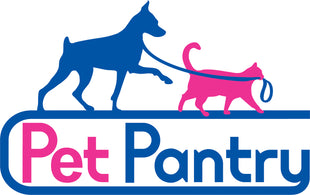10 Common Household Items That Are Poisonous to Dogs
As dog owners, we want to provide a safe and loving environment for our furry friends. However, many everyday household items can pose serious health risks to dogs. Some may surprise you! Knowing which substances are dangerous is the first step in keeping your dog safe.
In this article, we’ll highlight 10 common items that are poisonous to dogs and what to do if your pup accidentally ingests one.
1. Chocolate
Chocolate contains theobromine, which is toxic to dogs. Dark chocolate and baking chocolate are especially dangerous. Even small amounts can cause vomiting, diarrhea, rapid heartbeat, and seizures.
2. Grapes and Raisins
Grapes and raisins can lead to kidney failure in dogs. The exact toxin is unknown, but even a few grapes can cause serious harm. Symptoms include vomiting, lethargy, and decreased appetite.
3. Onions and Garlic
Onions, garlic, leeks, and chives contain compounds that can damage a dog’s red blood cells, leading to anemia. Raw, cooked, or powdered forms are all dangerous.
4. Xylitol
Xylitol is a sugar substitute commonly found in sugar-free gum, candy, and baked goods. It can cause a rapid insulin release in dogs, leading to low blood sugar, seizures, liver failure, and even death.
5. Alcohol
Alcohol affects dogs much more severely than humans. Even small amounts of alcohol (beer, wine, liquor, or food with alcohol) can cause vomiting, diarrhea, coordination problems, and central nervous system depression.
6. Macadamia Nuts
Macadamia nuts are highly toxic to dogs, causing weakness, vomiting, tremors, and hyperthermia. Symptoms usually appear within 12 hours of ingestion.
7. Avocado
Avocados contain persin, a substance that can cause vomiting, diarrhea, and heart congestion in dogs. While small amounts may not always be harmful, it’s best to avoid giving avocado to your pup.
8. Caffeine
Caffeine, found in coffee, tea, energy drinks, and certain medications, is dangerous for dogs. It stimulates the central nervous system, leading to restlessness, rapid breathing, heart palpitations, and muscle tremors.
9. Household Cleaners
Many common household cleaners contain bleach, ammonia, or phenols, which are toxic if ingested or inhaled by dogs. Always keep cleaning products locked away and use pet-safe alternatives when possible.
10. Certain Houseplants
Plants like lilies, sago palms, azaleas, and tulips are toxic to dogs. Ingesting these plants can lead to symptoms such as drooling, vomiting, diarrhea, and even organ failure.
What To Do If Your Dog Eats Something Poisonous
If you suspect your dog has ingested a toxic substance, contact your veterinarian immediately or call the Pet Poison Helpline. Acting quickly can save your dog’s life.
Conclusion
Many common household items can pose a danger to your dog’s health. By keeping these toxic substances out of reach and knowing what to watch for, you can help ensure a safe environment for your furry friend.

